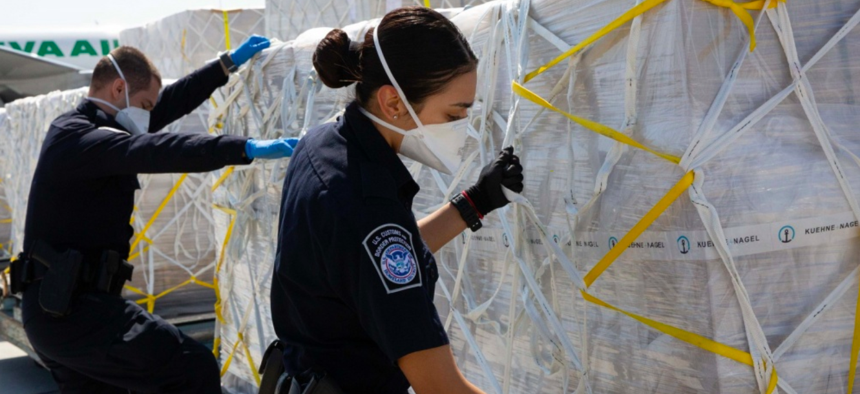
Sharon Pieczenik/Federal Emergency Management Agency
A Hollow Government Can’t Handle a Pandemic
The long shadow of inadequate resources and insufficient management capacity hangs over the federal response.
It has happened again: the vast power of the federal government to confront a major problem has been compromised by significant constraints in the structure, operation and capacity required for a comprehensive response. This time it is the pandemic, of course, the virulent coronavirus undeterred by the efforts of the world’s largest public sector. While the federal government has learned some lessons from previous public health crises and other disasters, disturbing gaps in the response remain.
Public sector constraints—whether in times of crisis or calm—are likely no surprise to anyone who works in or studies government. The reasons are plentiful and easily identified. Nevertheless, the persistence year after year of fundamental management problems should concern us all. I chronicled these foundational problems nearly 30 years ago in a cover story for Government Executive magazine and a book, America’s Hollow Government, which revealed systemic shortfalls and inadequacies in the federal sector that undermined efficient and effective governance.
The research showed how a multiple set of issues—inadequate resources, growing responsibilities, brain drains, hiring freezes, planning and delivery missteps, third party accountability problems, a decline in oversight, and a significant absence of political appointees, among others—“hollowed out” government’s ability to function and impeded important public sector missions.
Even a cursory review of the daily headlines and television crawls show the overwhelming challenges the government must confront with COVID-19—and how hollow government stymies the response. Consider critical resource cuts: both a pandemic watch team in China and a National Security Council pandemic group were largely curtailed in the last two years, in part as federal funds for the program ran out.
The Treasury Department and the Small Business Administration, responsible for much of the economic response, have seen staffing and constant dollar budgets steadily decline in recent years. These resource woes are likely culprits for glitches in the application process and distribution of economic stimulus and payroll protection funds, hampered largely by antiquated data systems.
Despite multiple warnings over the years of a pandemic’s inevitability, labs at the Centers for Disease Control and Prevention could not handle the growing crisis. Both the Veterans Affairs Department and the Federal Emergency Management Agency—the latter exhausted in recent years by responding to multiple natural disasters—encountered considerable confusion and delay meeting the need for personal protective equipment. Even in cases where resources increased, they have often been insufficient to meet expanding missions.
Hollow government also affected emergency management and public health planning. For years, watchdogs at the Government Accountability Office and inspectors general at the Homeland Security and Health and Human Services departments have warned about emergency preparedness gaps. Multiple pandemic planning documents and coordinating efforts went seemingly unheeded. Tabletop exercises proved insufficient to real-world crises. National planning seemed largely absent as supplies of protective gear languished for lack of effective coordination and timely distribution plans. Virus testing efforts became mired in accusations and confusion over responsibility.
The world is a more complicated place than when I first wrote about hollow government. So, too, are the responsibilities of federal agencies. Public service is too often encumbered by management and operational challenges dwarfed by its obligations. Equally troubling is that oversight of the largest economic rescue in American history risks being largely, well, an oversight, absent stronger action by Congress and the audit community.
Pandemic relief is just one among a multitude of pressing problems we expect the public sector to be solve. No vaccine or face mask can protect us from myopic governance.
Mark L. Goldstein is a former associate editor of Government Executive and author of America’s Hollow Government. He recently retired from federal service after many years working for the legislative branch.






